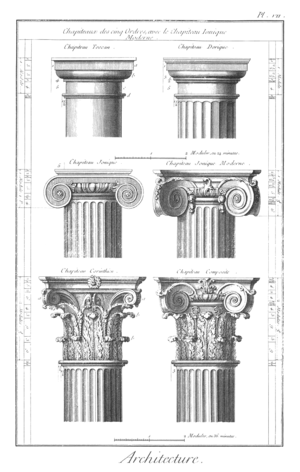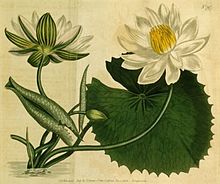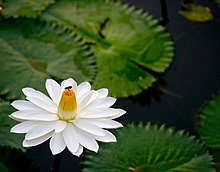Frank Lloyd Wright(1867–1959) 的建築美夢 (千分之一作品......) :Hollyhock House(蜀葵居)。日本浮世繪..... 古埃及古希臘將其所愛引入建築.....Hollyhock House也是一;與羅時瑋兄的短暫筆談 (202208.27)
Frank Lloyd Wright and Japan - Center for East Asian Studies
https://eastasia.wisc.edu › uploads › sites › 2021/05
由 K Nute 著作 · 2021 · 被引用 180 次 — The lotus gained thus imperishable significance; for the life -principle in the flower is translated— transmuted to terms of building stone to idealize a
"最初屋主 Aline Barnsdall 邀請萊特建造一座「瑪雅風情」的別墅,並在建築裝飾上大量使用喜愛的 Hollyhock(蜀葵)元素,如今建築作為 Barnsdall 藝術公園的核心,也是聯合國教科文組織指定的世界遺產。"
科林斯柱式[編輯]
希臘科林斯柱式(Corinthian Order)的比例比愛奧尼柱更為纖細,柱頭是用毛莨葉(Acanthus)作裝飾,形似盛滿花草的花籃。相對於愛奧尼柱式,科林斯柱式的裝飾性更強,但是在古希臘的應用並不廣泛,雅典的宙斯神廟(Temple of Zeus)採用的是科林斯柱式。


White lotus decorations on a frieze at a palace in Amarna (1352–1336 BC) The ancient Egyptians cultivated the white lotus in ponds and marshes.
This flower often appears in ancient Egyptian decorations. They believed that the lotus flower gave them strength and power; remains of the flower have been found in the burial tomb of Ramesses II. Egyptian tomb paintings from around 1500 BC provide some of the earliest physical evidence of ornamental horticulture and landscape design; they depict lotus ponds surrounded by symmetrical rows of acacias and palms. In Egyptian mythology Horus was occasionally shown in art as a naked boy with a finger in his mouth sitting on a lotus with his mother. The lotus was one of the two earliest Egyptian capitals motifs, the topmost members of a column. At that time, the motifs of importance are those based on the lotus and papyrus plants respectively, and these, with the palm tree capital, were the chief types employed by the Egyptians, until under the Ptolemies in the 3rd to 1st centuries BC, various other river plants were also employed, and the conventional lotus capital went through various modifications. Women often wore amulets during childbirth, which depicted Heqet as a frog, sitting in a lotus.
The number 1,000 in ancient Egyptian numerals is represented by the symbol of the white lotus. The related hieroglyph is:
The ancient Egyptians also extracted perfume from this flower. They also used the white lotus in funerary garlands, temple offerings and female adornment.
The white lotus is a candidate for the plant eaten by the Lotophagi of Homer's Odyssey.
| Nymphaea lotus | |
|---|---|
 | |
 | |
| Scientific classification | |
| Kingdom: | Plantae |
| Clade: | Tracheophytes |
| Clade: | Angiosperms |
| Order: | Nymphaeales |
| Family: | Nymphaeaceae |
| Genus: | Nymphaea |
| Species: | N. lotus |
| Binomial name | |
| Nymphaea lotus | |
| Subspecies | |
See text | |
| Synonyms[1][2] | |
Nymphaea dentata Schumach. | |
Nymphaea lotus, the white Egyptian lotus,[3] tiger lotus, white lotus or Egyptian white water-lily, is a flowering plant of the family Nymphaeaceae.
Distribution[edit]
It grows in various parts of East Africa and Southeast Asia. The Nymphaea lotus var. thermalis is a tertiary relict variety, endemic to the thermal waters of Europe, for example the Peţa River in Romania or the Hévíz lake in Hungary .[citation needed]
Cultivation[edit]
It was introduced into western cultivation in 1802 by Loddiges Nursery. Eduard Ortgies crossed Nymphaea lotus (N. dentata) with Nymphaea pubescens (N. rubra) to produce the first Nymphaea hybrid, illustrated in Flore des serres 8 t. 775, 776 under the name Nymphaea ortgiesiano-rubra. It is a popular ornamental aquatic plant in Venezuela.[citation needed]

沒有留言:
張貼留言